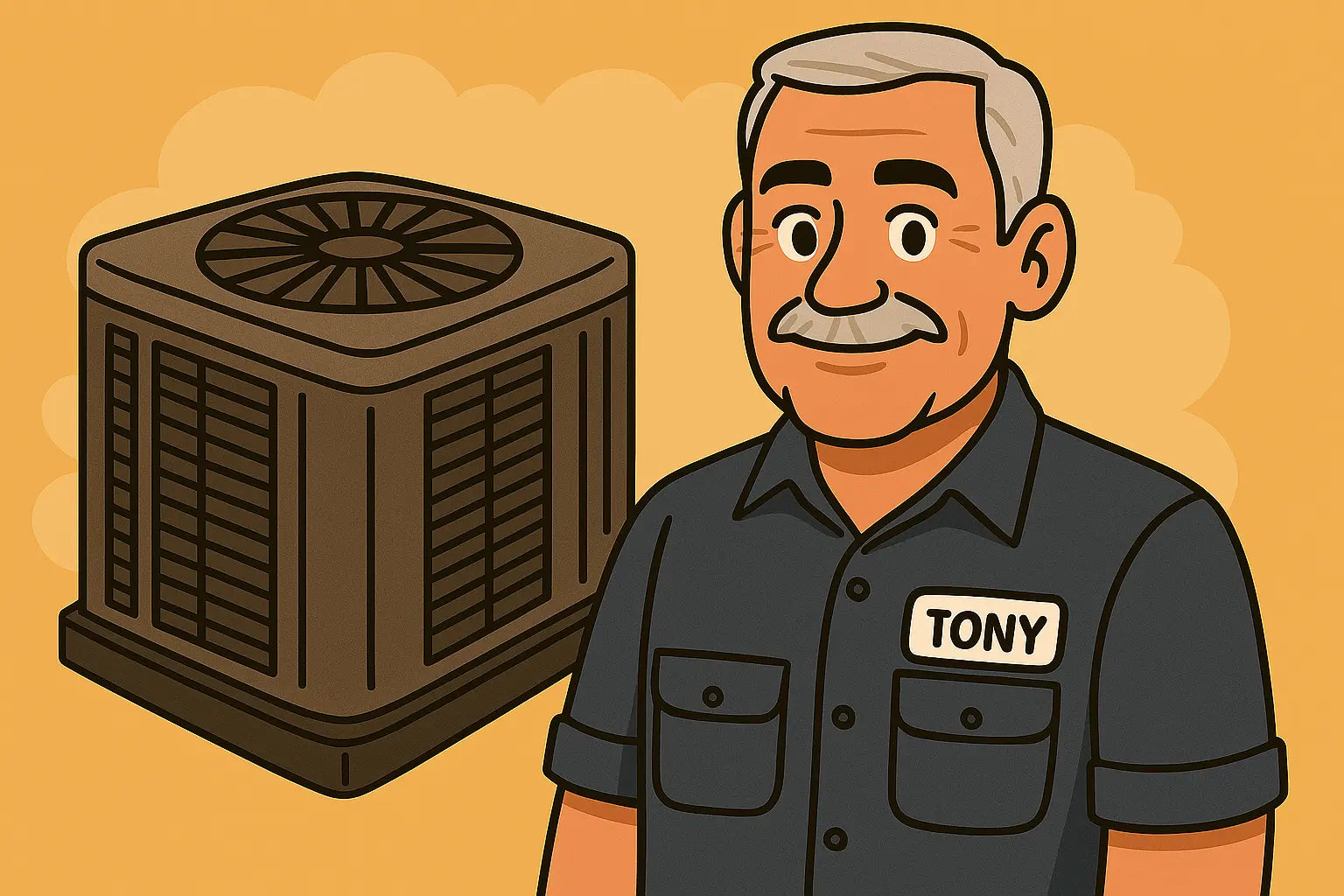Hey there, Tony here again! 👷
One of the most common rookie mistakes I see is homeowners picking the wrong-sized central air conditioner. Bigger isn’t always better — in fact, too big or too small can both cause serious problems. This post’s all about how to avoid the nightmare of an AC that just doesn’t fit your home right.
Why Sizing Your AC Matters More Than You Think
Your AC’s size is measured in BTUs (British Thermal Units) per hour — basically how much heat it can pull out of your house. Get that wrong, and you’re in for trouble:
-
Oversized AC: Cools your house super fast but cycles on and off constantly (called short cycling). That wastes electricity, wears out parts faster, and doesn’t remove humidity well, leaving you feeling clammy.
-
Undersized AC: Runs non-stop trying to keep up but never quite cools your space enough, driving up your energy bills and wearing out your compressor prematurely.
Think of it like trying to cool a small room with a firehose or a giant warehouse with a garden sprinkler. Neither works well.
The “Manual J” Load Calculation: HVAC’s Gold Standard
Forget eyeballing or using square footage alone. You need a Manual J load calculation — a detailed process HVAC pros use to size your system based on real factors:
-
Square footage
-
Ceiling height
-
Insulation levels
-
Number, size, and direction of windows
-
Number of occupants
-
Local climate (sun exposure, humidity, temps)
-
Appliances and lighting heat gain
This gives you a much more accurate BTU requirement than just “X BTUs per 1000 sq ft.” You can find resources online like Energy Vanguard’s Manual J overview that explain why it’s so important.
If you want a technical deep dive on Manual J, HVAC.com’s Manual J breakdown is one of the best out there for those who want to geek out on the details.
DIY: Rough BTU Estimate for Your Home
If you want a quick rough guess before calling in the pros, here’s a ballpark:
-
Up to 1,000 sq ft → ~12,000 BTUs (1 ton)
-
1,000–1,500 sq ft → ~18,000 BTUs (1.5 ton)
-
1,500–2,000 sq ft → ~24,000 BTUs (2 ton)
-
2,000–2,500 sq ft → ~30,000 BTUs (2.5 ton)
-
2,500–3,000 sq ft → ~36,000 BTUs (3 ton)
But remember, this doesn’t replace a professional calculation.
Other Factors That Affect Your AC Size
-
Shade and landscaping: A shaded home may need a smaller unit.
-
Sunlight exposure: Big south-facing windows mean more heat gain.
-
Number of floors: Multi-story homes require more cooling power.
-
Attic and duct insulation: Poor insulation means your AC has to work harder.
For more on how sunlight and shading affect load, the U.S. Department of Energy’s guide on air conditioning has some excellent homeowner tips.
Why You Should Never Ignore Ductwork in Sizing
Even if your AC is sized right, leaky or undersized ducts kill performance. According to ENERGY STAR, duct losses can waste up to 30% of cooled air. If you upgrade your AC, consider inspecting or upgrading ducts too.
What Happens If Your AC Is Oversized?
-
Short cycling leads to uneven temperature and humidity control
-
Increased wear and tear on compressor and components
-
Higher energy bills despite quick cooling
-
More noise and discomfort
What Happens If Your AC Is Undersized?
-
Constantly running system that never feels cool enough
-
Higher energy consumption and stress on the compressor
-
Increased breakdown risk
-
Poor humidity control leading to sticky, uncomfortable air
If you want to understand how improper sizing affects energy bills and comfort, check out this homeowner-friendly Consumer Reports article on buying air conditioners — it breaks down the risks of undersized and oversized units in plain language.
How to Avoid Sizing Mistakes
-
Always insist on a Manual J load calculation by a certified HVAC technician.
-
Be wary of contractors who only use square footage as a sizing factor.
-
Consider home improvements that improve energy efficiency before upsizing your AC.
-
Use quality products compatible with R-32 refrigerant, like the systems at The Furnace Outlet — they have packages sized for every home.
Final Thoughts From Tony
Sizing your central AC is not something to guess on — it impacts your comfort, wallet, and the life of your system. If you’re buying a new unit or replacing an old one, get the right advice, run the numbers, and don’t settle for less.
Keep in mind, the right system paired with quality installation and ductwork makes all the difference. If you want to check out some good options sized right for your home, swing by The Furnace Outlet’s Central AC collection. They’ve got solid, R-32 compatible systems ready to keep you cool without breaking the bank.
Need an installation checklist for your central AC? Visit: The Guide for Homeowners.
Catch you next time when we dive into installation checklists and troubleshooting tips. Stay cool and don’t sweat the small stuff — unless it’s your AC not working! 😎
— Tony the Trusted Tech







